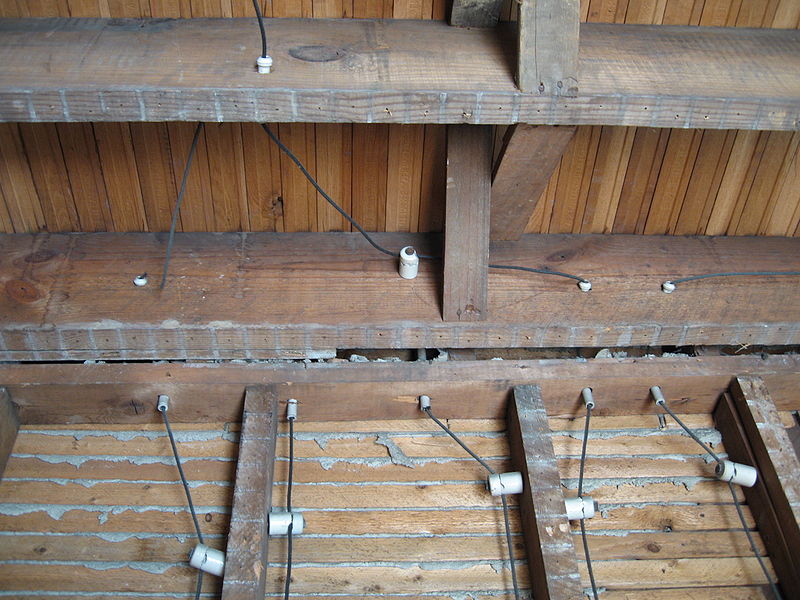
Originally Posted by
rmcgovern22

Just thought id clear this up for all of you. I am an electrician with 20 plus years experience dealing with old houses. Most knob and tube wiring is actually tin coated copper in cloth, asphault, or burlap thread. It does not and never has had asbestos in it or on it. if you took the time to strip a small portion of it, you would see the coper
core, but the silver exterior. good luck!
I am sorry my friend, but you're wrong. It was used as an insulation.
Problems Associated with K&T Wiring:
Unsafe modifications are far more common with K&T wiring than they are with Romex and other modern wiring systems. Part of the reason for this is that K&T is so old that more opportunity has existed for improper modifications.
The insulation that envelopes the wiring is a fire hazard.
It tends to stretch and sag over time.
It lacks a grounding conductor. Grounding conductors reduce the chance of electrical fire and damage to sensitive equipment.
In older systems, wiring is insulated with varnish and fiber materials that are susceptible to deterioration.
Compared with modern wiring insulation, K&T wiring is less resistant to damage.
K&T wiring insulated with cambric and asbestos is not rated for moisture exposure. Older systems contained insulation with additives that may oxidize copper wire. Bending the wires may cause insulation to crack and peel away.
From Knob-and-Tube Wiring - InterNACHI
Knob-and-Tube Wiring - InterNACHI
Safety
Knob and tube wiring used cloth insulation. Over time this insulation can wear out, become brittle, and fall off, leaving bare wire. The ceramic knobs and tubes provide some protection because even if the insulation does fall off, the bare wire can not touch the wooden structure. The insulation is also somewhat flammable.
Some knob and tube insulation contained asbestos, which can cause cancer. Unlike modern wiring, splices were not contained in a protective box. If a splice failed, it could make a spark and start a fire. The fuse boxes usually had no protection from using an incorrect fuse. An incorrect fuse could cause the wiring to overheat and become damaged or start a fire. Another problem is that when a fuse blew, people who didn't know or didn't care about the hazards would sometimes replace it with a coin or a ball of foil if a replacement fuse wasn't available, leaving no overload protection at all. These issues can be partially corrected by installing a modern circuit breaker panel with arc fault circuit interrupter breakers. There was also no ground wire. Knob and tube can be updated with a GFCI to add the equivalent of grounding.
[change]
Knob and tube wiring - Simple English Wikipedia, the free encyclopedia
Then on the EPA website on page 18 of document under the heading "Electrical Equipment"
Document Display | NSCEP | US EPA







 Register To Reply
Register To Reply














Bookmarks